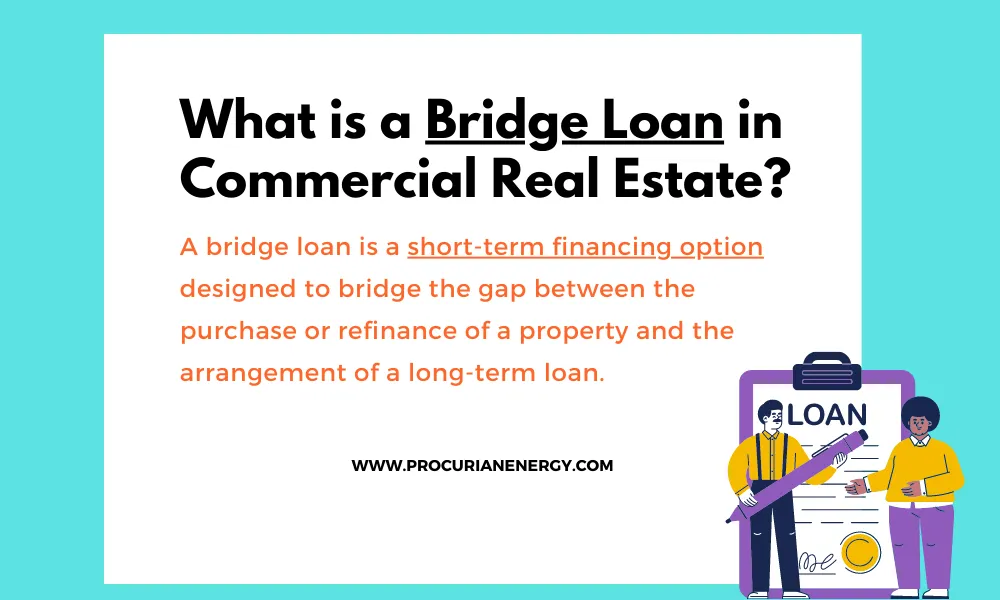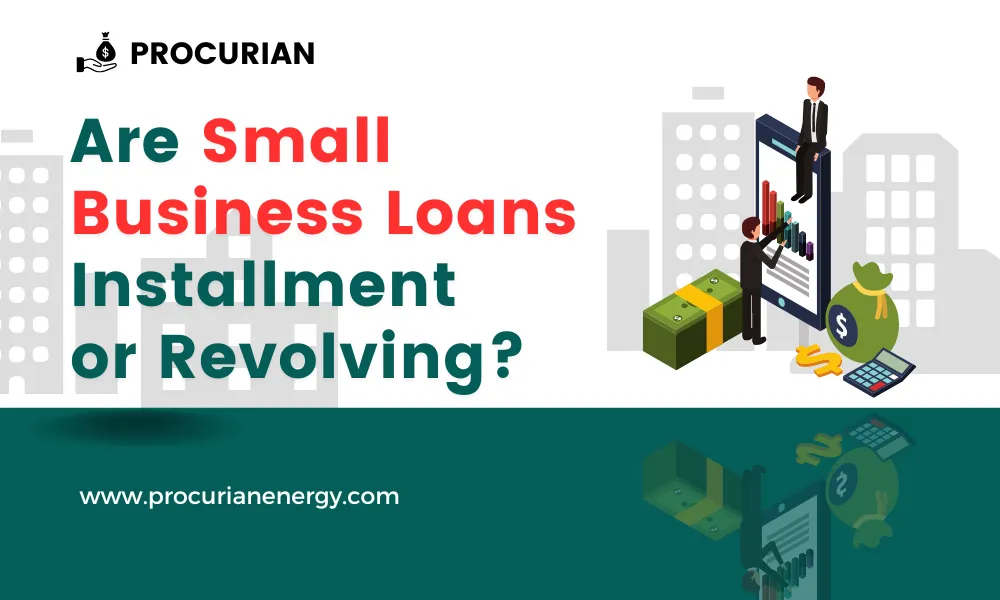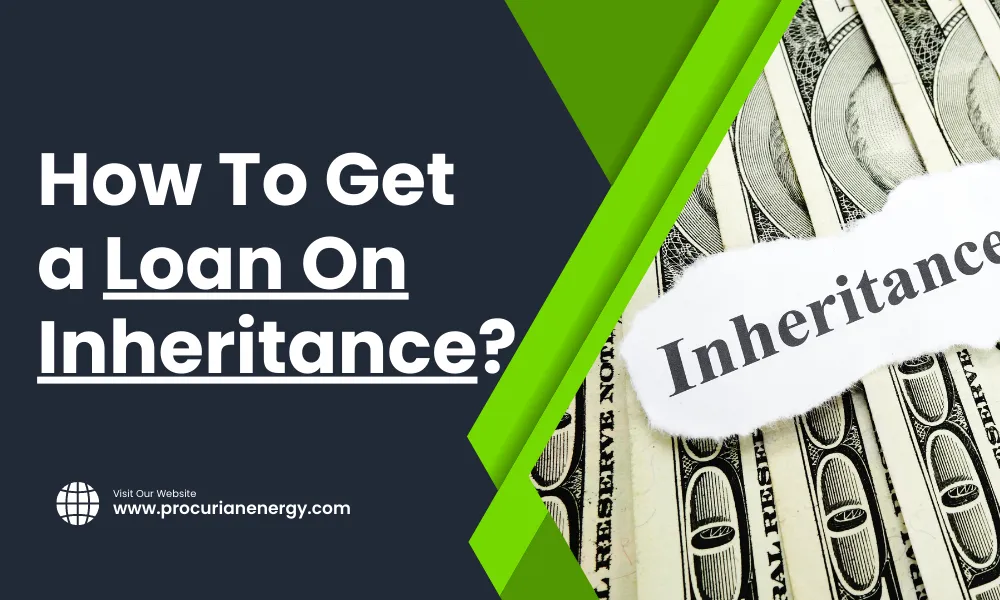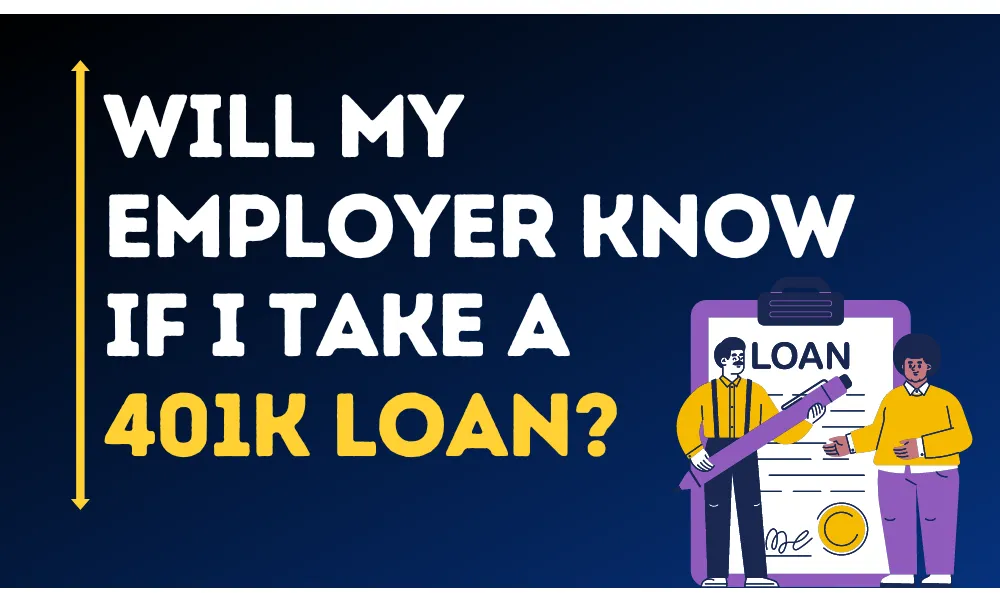The availability of capital is very much important to the success of many commercial real estate projects.
Even while traditional finance options are common, there are instances when a more flexible and transient alternative is needed. Bridge loans are relevant in this case.
In this blog article by ProCurian, we’ll discuss bridge loans, their significance in commercial real estate and how they could help developers and investors bridge the gap between agreements.
Overview of Commercial Real Estate Financing
Before we delve into bridge loans, let’s briefly discuss the landscape of commercial real estate financing.
Traditional financing options such as:
- mortgages,
- commercial loans and
- lines of credit are commonly used for long-term investments.
However, these options often involve lengthy approval processes, strict qualification requirements and may not align with the time-sensitive nature of certain transactions.
What is Bridge Loan?

A bridge loan is a short-term financing option designed to bridge the gap between the purchase or refinance of a property and the arrangement of a long-term loan.
It provides immediate funds to facilitate time-sensitive transactions, property renovations or recapitalization efforts.
In comparison to standard loans, bridge loans are frequently repaid sooner, typically between a few months to a few years.
Bridge Loan example
Here’s an example of how a bridge loan works:
- Let’s say you have a buyer interested in purchasing your current home for $300,000.
- The price of the new home you want to buy is $400,000.
- The down payment required for the new home is typically a percentage of the purchase price, let’s say 20%. In this case, the down payment would be $80,000 (20% of $400,000).
- You approach a lender and request a bridge loan for the down payment. The lender agrees to provide you with a bridge loan for $80,000. The loan term is usually short-term, typically six months to a year.
- The lender may charge an interest rate of, let’s say, 6% per annum on the bridge loan. They might also charge an origination fee of 2% of the loan amount.
- Once your current home is sold, you receive the proceeds of $300,000. From that amount, you repay the bridge loan amount of $80,000 plus any interest and fees incurred during the loan term.
- After repaying the bridge loan, you would have $220,000 ($300,000 – $80,000) left from the sale of your current home, which you can use towards the purchase of your new home.
Reasons for Obtaining a Bridge Loan in Commercial Real Estate
1) Timing and Speed – One of the primary reasons investors turn to bridge loans is the need for swift transactions. In competitive markets, a bridge loan allows investors to secure a property quickly while finalizing long-term financing options.
2) Property Renovations and Improvements – Bridge loans are often utilized to fund renovations or improvements on a property before it can qualify for traditional financing. These loans enable investors to enhance the property’s value and increase its marketability.
3) Bridge Financing for New Acquisitions – When acquiring a new property, investors may require immediate funds for the down payment or closing costs. Bridge loans provide the necessary liquidity until long-term financing is secured.
4) Recapitalization and Refinancing – In some cases, investors may need to recapitalize their existing investments or refinance high-interest loans. Bridge loans can serve as a temporary solution until a more favorable long-term financing option becomes available.
Process of Obtaining a Bridge Loan
Obtaining a bridge loan involves several steps:
- Qualification Requirements – Lenders assess the borrower’s creditworthiness, financial stability, and property value to determine eligibility for a bridge loan.
- Documentation and Underwriting Process – Borrowers are required to submit relevant financial documents, property appraisals and a comprehensive business plan outlining the purpose and exit strategy of the loan.
- Loan-to-Value Ratio and Interest Rates – Lenders evaluate the loan-to-value ratio to determine the loan amount, typically offering a percentage of the property’s appraised value. Interest rates for bridge loans are usually higher than those of traditional loans due to the short-term nature and higher risk involved.
- Loan Terms and Repayment Options – Bridge loans typically have flexible repayment options such as interest-only payments or a lump sum repayment at the end of the loan term.
Commercial bridge loan rates
| Loan Amount | Loan Term | Interest Rate Range (Annual) |
|---|---|---|
| Up to $1 million | 6 to 12 months | 8% – 12% |
| $1 million – $5 million | 6 to 18 months | 7% – 10% |
| $5 million – $10 million | 6 to 24 months | 6% – 9% |
| Over $10 million | 6 to 36 months | 5% – 8% |
Choosing the Right Bridge Loan Lender
Selecting the right lender is crucial for a successful bridge loan transaction. Factors to consider are:
- the lender’s experience in commercial real estate,
- their reputation,
- the range of loan options they offer, and
- their responsiveness to the borrower’s needs.
Thorough research and due diligence are essential to ensure a smooth and reliable financing process.
| Company | Estimated Starting APR | Maximum Loan Amount | Maximum Repayment Term | Maximum LTV | DSCR (Debt Service Coverage Ratio) |
|---|---|---|---|---|---|
| Bloomfield Capital | 7% | $30 million | 36 months | 75% | 1.20x |
| Kiavi | 9.25% | $1.5 million | 24 months | 90% | Varies |
| Commercial Loan Direct | 9.20% | $30 million+ | 36 months | 80% | 1.00x |
| National Funding | 15% | $400,000 | 18 months | None | None |
| Arbor Realty Trust | 8% | $100 million | 36 months | 75% | 1.25x |
| AVANA Capital | 7% | $20 million+ | 36 months | 75% | 1.40x |
| Clopton Capital | 7.5% | $100 million+ | 60 months | 80% | 1.20x |
Pros and Cons of Bridge Loans
Pros of Bridge Loans:
| Pros | Explanation |
|---|---|
| Short-term financing | Bridge loans provide short-term financing that can help bridge the gap between the purchase of a new property and the sale of an existing one. |
| Quick access to funds | Bridge loans can be obtained relatively quickly, allowing borrowers to access the necessary funds in a timely manner. |
| Flexible repayment options | Bridge loans often offer flexible repayment options, such as interest-only payments during the loan term, which can ease financial strain for borrowers. |
| Potential for high loan amounts | Bridge loans typically have higher loan amounts compared to other short-term financing options, making them suitable for larger transactions. |
| Can be used for various purposes | Bridge loans can be used for different purposes, including real estate purchases, renovations, or covering business operating expenses during transitional periods. |
Cons of Bridge Loans:
| Cons | Explanation |
|---|---|
| Higher interest rates | Bridge loans generally have higher interest rates compared to traditional long-term loans, which can increase the overall cost of borrowing. |
| Additional fees and closing costs | Borrowers may need to pay additional fees and closing costs associated with bridge loans, such as origination fees, appraisal fees, and administrative charges. |
| Short repayment period | Bridge loans typically have a short repayment period, usually ranging from a few months to a year. This may result in higher monthly payments for borrowers. |
| Potential for increased risk | Bridge loans carry a higher level of risk compared to traditional loans, as they are often secured against the borrower’s existing property and involve quick turnaround. |
| Dependence on property sale | Borrowers relying on the sale of their existing property to repay the bridge loan face the risk of delays or complications in the sale process, potentially causing financial strain. |
FAQs related to Bridge Loans
What is a commercial bridging loan?
A commercial bridging loan is a short-term financing option used in the business world to bridge the financial gap between buying a new property and selling an existing one.
What are the cons of a bridge loan?
High interest rates, short repayment period, potential for default, added financial burden, risk of being unable to secure long-term financing, and potential negative impact on credit score.
How much can I borrow as a bridging loan?
With a bridging loan, you could be able to borrow up to 100% of the price of buying your new home including associated costs.
Do you need collateral for a bridging loan?
Yes, collateral is typically required for a bridging loan as it serves as security against the loan and helps mitigate the lender’s risk.
Are bridging loans unsecured?
No, bridging loans are typically secured loans, meaning they require collateral such as property or assets to secure the loan.
How much deposit do you need for a bridging loan?
The required deposit for a bridging loan ranges from 20% to 40% of the loan amount.
What is the monthly interest rate on a bridging loan?
Interest rates on bridge loans generally ranges from 0.45% to 2% monthly.
Do you pay monthly payments on a bridging loan?
Yes, monthly payments are typically required on a bridging loan including the interest, until the loan is fully repaid.
How to get 100 percent bridging loan?
To secure a 100% bridging loan, provide substantial collateral or assets that cover the loan amount, demonstrate a strong credit history and meet the lender’s eligibility criteria.
Conclusion
Bridge loans are an invaluable tool in the world of commercial real estate.
Their flexibility, speed and ability to bridge gaps in financing make them a vital resource for investors and developers.
Whether it’s acquiring a property, funding renovations or recapitalizing existing investments, bridge loans provide a short-term solution to meet the unique challenges of commercial real estate transactions.
By understanding the intricacies of bridge loans and working with reputable lenders, investors can navigate the complexities of the market and achieve their goals with confidence.









